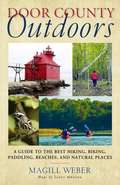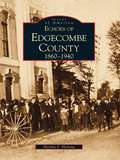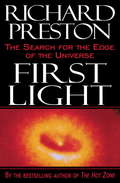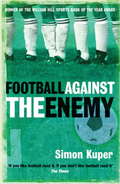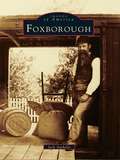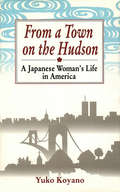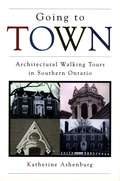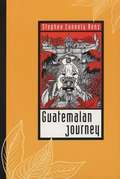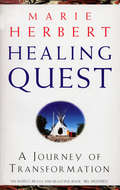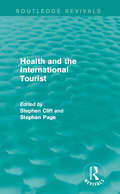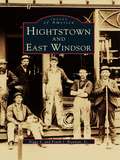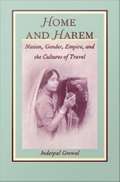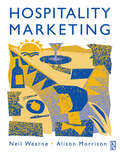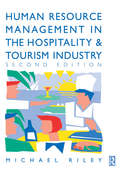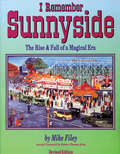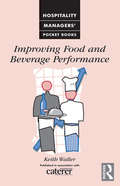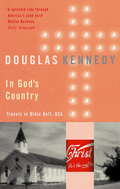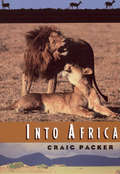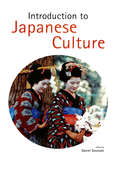- Table View
- List View
Door County Outdoors
by Magill WeberA picturesque peninsula with 298 miles of Lake Michigan shoreline, state parks, forests, and cozy inns, Door County is one of the Midwest’s prime tourist attractions. Magill Weber explores the many recreational opportunities available to visitors, including secret spots known only to locals and longtime seasonal residents. Wisconsin native Janet Mrazek contributes 125 detailed and easy-to-follow maps. With suggestions of more than 150 scenic hikes, biking and paddling routes, end-of-the-road beaches, lighthouses, and wildlife-watching sites, and descriptions of the local flora and fauna,Door County Outdoorsis the ultimate guide for active travelers and nature enthusiasts.
Eastern Great Lakes Lighthouses: The Life and History of America's Waterways)
by Ray JonesThe stories of the most significant lighthouses on Lakes Ontario, Erie, and Huron--on both the American and Canadian sides--come alive in the stirring profiles contained in these pages. Descriptions of forty-three [count may change] lighthouses, including eighteen [count may change] on the Canadian side of the lakes, contain directions to the lights and details on visiting them.
Echoes of Edgecombe County: 1860-1940
by Monika S. FlemingEdgecombe County, North Carolina, has a long andintriguing history stretching back to the 1730s, when the first permanent European residents began settling the banks of the Tar River, and beyond, when Tuscaroras roamed the woodlands of this fertile region. Edgecombe County was recognized as a county in 1741; just over a century later it led the nation in cotton production and was well known as a forward-thinking and prosperous county of exceptional natural beauty. The tremendous changes ushered in by the Civil War and Reconstruction coincided with the development of photography. Photographers like S.R. Alley in Tarboro, who captured life in Edgecombe County on film in the crucial era covered here, were unknowingly recording history in a way that futuregenerations will be forever grateful for.
First Light
by Richard PrestonSeven years before Richard Preston wrote about horrifying viruses in The Hot Zone, he turned his attention to the cosmos. In First Light, he demonstrates his gift for creating an exciting and absorbing narrative around a complex scientific subject--in this case the efforts by astronomers at the Palomar Observatory in the San Gabriel Mountains of California to peer to the farthest edges of space through the Hale Telescope, attempting to solve the riddle of the creation of the universe.Richard Preston's name became a household word with The Hot Zone, which sold nearly 800,000 copies in hardcover, was on The New York Times's bestseller list for 42 weeks, and was the subject of countless magazine and newspaper articles. Preston has become a sought-after commentator on popular science subjects.For this hardcover reprint of what has been called "the best popular account of astronomy in action," (Kirkus Reviews) he has revised the text and written a new introduction.
Football Against The Enemy
by Simon KuperThe classic winner of the William Hill Sports Book of the Year AwardThroughout the world, football is a potent force in the lives of billions of people. Focusing national, political and cultural identities, football is the medium through which the world's hopes and fears, passions and hatreds are expressed. Simon Kuper travelled to 22 countries from South Africa to Italy, from Russia to the USA, to examine the way football has shaped them. At the same time he tried to find out what lies behind each nation's distinctive style of play, from the carefree self-expression of the Brazilians to the anxious calculation of the Italians. During his journeys he met an extraordinary range of players, politicians and - of course - the fans themselves, all of whom revealed in their different ways the unique place football has in the life of the planet.
Football Against The Enemy: Football Against The Enemy
by Simon KuperThe classic winner of the William Hill Sports Book of the Year Award'None matches this global examination for originality, breadth and sheer courage' MAIL ON SUNDAY'If you like football, read it. If you don't like football, read it' THE TIMESThroughout the world, football is a potent force in the lives of billions of people. Focusing national, political and cultural identities, football is the medium through which the world's hopes and fears, passions and hatreds are expressed. Simon Kuper travelled to 22 countries from South Africa to Italy, from Russia to the USA, to examine the way football has shaped them. At the same time he tried to find out what lies behind each nation's distinctive style of play, from the carefree self-expression of the Brazilians to the anxious calculation of the Italians. During his journeys he met an extraordinary range of players, politicians and - of course - the fans themselves, all of whom revealed in their different ways the unique place football has in the life of the planet.
Foxborough
by Jack AutheletThis delightful new photographic history of Foxborough presents an affectionate and lively tribute to the town in its heyday. Well-known local historian Jack Authelet has pored through the archives of the Foxborough Historical Commission to select over two hundred vintage images of the town and its people. Combined with an informative text, these outstanding pictures present a revealing social commentary on life in Foxborough from the mid-nineteenth century to the town's sesquicentennial celebration in 1928. Foxborough came of age during the industrial era and this fascinating period is expertly documented here. With photographs of the straw hat factories that made Foxborough famous, as well as images of the people who allowed them to prosper, Mr. Authelet takes his readers on an exciting journey through Foxborough's rich heritage. Readers will gain a tremendous insight into the evolution of Foxborough as a community and also learn of high and low points in the town's development, from monumental civic improvements to the devastating destruction of lives and jobs in natural disasters.
From a Town on the Hudson
by Yuko KoyanoYuko Koyano spent five years in the United States in the 1980s as the wife of a Japanese businessman, the mother of two sons, and an observer in her own right. She believed that the experience would open a new window on the world for herself and her family, and she was not disappointed. From the outset, Ms. Koyano was a keen observer of American life in the New Jersey town where she lived just across the Hudson from Manhattan. She soon found that her study of English Literature in college in Japan had left her ill-prepared to understand the words in her sons' schoolbooks, not to mention the ones they picked up even more quickly in the schoolyard. Nor did contemporary life in the United States match the images she had grown up with on Japanese television reruns of American sitcoms. Not deterred, Ms. Koyano entered the life of everyday America, and its cast of characters-schoolteachers, senior citizens, taxi drivers, police officers, and postal clerks-fill the pages of this affectionate memoir. The vignettes captured in From a Town on the Hudson delight, amuse, and touch the reader, and give us-host and visitor alike-an opportunity to see ourselves as others see us.
Going to Town: Architectural Walking Tours in Southern Ontario
by Katherine AshenburgWinner of The Ontario Historical Society’s Fred Landon Award for Best Regional History. With 300 photos and 11 maps. A work of unexpected delights and surprises: here is a one-of-a-kind guidebook that pinpoints the best of Ontario’s architectural heritage in its most charming towns, offers tantalizing and informative details of provincial history, indulges the near universal vice of real-estate voyeurism, and beckons even the most reluctant to physical exercise. Katherine Ashenburg is our knowledgeable and charmingly opinionated companion on walking tours of ten small (populations 1000 to 27,000) Ontario communities that provide a rewarding variety of domestic and public architecture in a walkable compass. Each tour begins with a brief historical sketch of the town, then, with the aid of a detailed map, guides the reader/walker to some 60 sites over a leisurely but carefully plotted two-and-a-half to three-and-a-half hour stroll. We visit churches and jails, libraries and town halls, theatres and factories, and all manner of houses - homes of startling grandiosity and humble integrity. We become conversant with belvederes and ogee arches, Flemish bond and board and batten, at ease with Regency and Queen Anne, Italianate and Romanesque. And along the way, Ashenburg reveals the town’s true personality, its distinctive architectural styles, forms and materials, and the genius, ambition, and vanities of its founders and builders. Every town - Perth, Picton, Cobourg, St. Mary’s, Niagara-on-the-Lake, Merrickville, Port Hope, Paris, Stratford and Goderich - is a day’s excursion from Toronto by a car or public transit; most are day-trips from either Ottawa or London. Over 300 black and white photographs capture the highlights; 11 maps show the way. For easy reference, there is a helpful, illustrated Guide to Historical Styles and an exhaustive Glossary of Architectural terms - everything from Apse to Voussoir.
Great British Journeys
by Nicholas CraneIntrepid presenter Nicholas Crane investigates eight epic journeys, following in the footsteps of our greatest indigenous explorers.Nick presents eight of the most interesting traveller-chroniclers to have explored and reported on the state of the nation. From Gerald of Wales who embarked on a seven week journey around the wild perimeter of Wales in March 1188, to HV Morton, the journalist and travel writer who crossed the length and breadth of England by car in the 1920s. Others include Celia Fiennes who started her many journeys around Britain on horseback in the late 1600s at the age of 20, Tudor antiquarian John Leland, Daniel Defoe, William Cobbett, Thomas Pennant, and William Gilpin, who travelled through the north of England by boat in 1770.
Guatemalan Journey
by Stephen Connely BenzGuatemala draws some half million tourists each year, whose brief visits to the ruins of ancient Maya cities and contemporary highland Maya villages may give them only a partial and folkloric understanding of Guatemalan society. In this vividly written travel narrative, Stephen Connely Benz explores the Guatemala that casual travelers miss, using his encounters with ordinary Guatemalans at the mall, on the streets, at soccer games, and even at the funeral of massacre victims to illuminate the social reality of Guatemala today. The book opens with an extended section on the capital, Guatemala City, and then moves out to the more remote parts of the country where the Guatemalan Indians predominate. Benz offers us a series of intelligent and sometimes humorous perspectives on Guatemala's political history and the role of the military, the country's environmental degradation, the influence of foreign missionaries, and especially the impact of the United States on Guatemala, from governmental programs to fast food franchises. Guatemala draws some half million tourists each year, whose brief visits to the ruins of ancient Maya cities and contemporary highland Maya villages may give them only a partial and folkloric understanding of Guatemalan society. In this vividly written travel narrative, Stephen Connely Benz explores the Guatemala that casual travelers miss, using his encounters with ordinary Guatemalans at the mall, on the streets, at soccer games, and even at the funeral of massacre victims to illuminate the social reality of Guatemala today. The book opens with an extended section on the capital, Guatemala City, and then moves out to the more remote parts of the country where the Guatemalan Indians predominate. Benz offers us a series of intelligent and sometimes humorous perspectives on Guatemala's political history and the role of the military, the country's environmental degradation, the influence of foreign missionaries, and especially the impact of the United States on Guatemala, from governmental programs to fast food franchises.
Healing Quest: A Journey of Transformation
by Marie HerbertWhen her two daughters were approaching the finish of their education Marie Herbert felt the need to mark the end of the child-rearing phase of her life by a rite of passage, a way to find herself a new place in the grand scheme of things. Long drawn to the Native American spiritual tradition, she planned a visit to the United States and an extraordinary journey of personal transformation under the guidance of Native American Healers. However, the end of her time of motherhood coincided tragically with the sudden death of one of her daughters and so her odyssey was to become far sadder and more urgent than she could have imagined. HEALING QUEST is the fascinating description of Marie Herbert's inner and outer journey of the heart. Vivid portraits of the people she met along the way are combined with honest accounts of the change in her feelings - together with ideas about how the readers, too, may learn from what she experienced and so gain insights into his or own life, whether in practical, emotional or spiritual terms.
Health and the International Tourist (Routledge Revivals)
by Stephen Page Stephen CliftThe rapid increase in the demand for international tourism has led a growing number of people to seek holidays and travel experiences in both developed and developing countries. Yet little interest has been shown in the interface between tourism and health, Health and the International Tourist, first published in 1996, examines key relationships between travel, tourism and health. Particular attention is given to the behaviour and lifestyle of tourists and approaches to reducing the health risks associated with international travel and tourism. This was the first book to address tourist health in an interdisciplinary manner, with contributions from professionals in medicine, health promotion, the travel and tourism industry and tourism researchers. It will provide a sound basis for further research and the development of health promotion strategies, and will be of interest to students of health and tourism.
Hightstown and East Windsor: An Anecdotal History Of Hightstown And East Windsor (Images of America)
by Peggy S. Brennan Frank J. Brennan Jr.Hightstown Borough and East Windsor Township are two neighboring New Jersey communities steeped in history. Over the years, the two towns have seen numerous important developments in agriculture and the area has served as a hub for small-town commerce and railroad travel. Several notable historic figures made their way through the region over the years as well, including Clara Barton, the Marquis de Lafayette, Horace Greeley, Phineas T. Barnum, and Woodrow Wilson.
Home and Harem: Nation, Gender, Empire, and the Cultures of Travel
by Inderpal GrewalMoving across academic disciplines, geographical boundaries, and literary genres, Home and Harem examines how travel shaped ideas about culture and nation in nineteenth-century imperialist England and colonial India. Inderpal Grewal's study of the narratives and discourses of travel reveals the ways in which the colonial encounter created linked yet distinct constructs of nation and gender and explores the impact of this encounter on both English and Indian men and women. Reworking colonial discourse studies to include both sides of the colonial divide, this work is also the first to discuss Indian women traveling West as well as English women touring the East. In her look at England, Grewal draws on nineteenth-century aesthetics, landscape art, and debates about women's suffrage and working-class education to show how all social classes, not only the privileged, were educated and influenced by imperialist travel narratives. By examining diverse forms of Indian travel to the West and its colonies and focusing on forms of modernity offered by colonial notions of travel, she explores how Indian men and women adopted and appropriated aspects of European travel discourse, particularly the set of oppositions between self and other, East and West, home and abroad. Rather than being simply comparative, Home and Harem is a transnational cultural study of the interaction of ideas between two cultures. Addressing theoretical and methodological developments across a wide range of fields, this highly interdisciplinary work will interest scholars in the fields of postcolonial and cultural studies, feminist studies, English literature, South Asian studies, and comparative literature.
Hospitality Marketing
by Alison Morrison Neil WearneHospitality Marketing is a no-nonsense, practical book which has been revised and adapted for a wider market, including European and international examples. It shifts the major emphasis of hospitality marketing onto building a business from the inside by word-of-mouth rather than relying mostly on the endeavours of outside promotion. Hospitality marketers are encouraged to build a customer base by constantly improving the customer's experiences at the point of sale. Hospitality Marketing aims to help you direct your decisions concerning marketing strategies towards what happens to and for the customers.
Human Resource Management in the Hospitality and Tourism Industry
by Michael RileyThis fully updated and expanded second edition of Human Resource Management examines the role of human resource management in the hospitality and tourism industry. The subject is approached from four perspectives: * the social psychology of managing people * the economics of labour * the practical techniques * strategy. The author argues that labour costs, labour utilisation, labour market behaviour and pay are inseparable from the skills of managing people. The book contains an important analysis of the labour market for this industry and now, in its second edition includes, among others, chapters on attitude measurement, customer-employee relations, questionnaire design and organizational change. Human Resource Management in the Hospitality and Tourism Industry is written in a clear, user-friendly style and offers a challenging view of the subject and an opportunity to learn an important aspect of management in an applied context. It is appropriate for degree level students and practitioners in the industry.
I Remember Sunnyside
by Mike FileyFirst published in 1982, I Remember Sunnyside is a mine of golden memories, bringing back to life an earlier Toronto, only hints of which remain today.Like the city itself, Sunnyside was an everchanging landscape from its heady opening days in the early 1920s to its final sad demolition in the 1950s. The book captures the spirit of the best of times a magical era which can only be recaptured in memory and photographs. It also presents the reality of a newer Toronto where change, although necessary, is sometimes regrettable.
Improving Food and Beverage Performance
by Keith WallerThe food and beverage aspect of hotel operations is often the most difficult area to control effectively, but it plays a crucial role in customer satisfaction. Improving Food and Beverage Performance is able to show how successful catering operations can increase profitability whilst providing continuing improvements in quality, value and service. Keith Waller looks at the practical issues of improving performance combining the key themes of quality customer service and efficient management. This text will enable managers and students alike to recognise all the contributing factors to a successful food and beverage operation.Keith Waller is Senior Lecturer for the Faculty of Business and Management at Blackpool and the Fylde College. He has extensive experience in the hospitality industry and is a member of the Hotel and Catering International Management Association. He is the co-author, with Professor John Fuller, of The Menu, Food and Profit.
In God's Country: Travels in Bible Belt, USA
by Douglas KennedyThough much has been written about the political implications of the religious revival which has engulfed America in recent years, a question remains unanswered: what pushes its people into 'declaring for Jesus'?Douglas Kennedy spent a long hot summer cruising through that expanse of the American South known as 'The Bible Belt' exploring that question. In a remarkable journey into one of the strangest corners of the United States, Kennedy finds himself spending time in Miami with a one-time member of the Mafia turned charismatic preacher, discovering Christian heavy metal music in Nashville, and visiting Death Row in South Carolina with an evangelist who ministers to the condemned.Repeatedly discovering the extraordinary within the ordinary, IN GOD'S COUNTRY is a profound, yet brilliantly entertaining exploration of life in late twentieth century America.
In God's Country: Travels in Bible Belt, USA
by Douglas KennedyThough much has been written about the political implications of the religious revival which has engulfed America in recent years, a question remains unanswered: what pushes its people into 'declaring for Jesus'?Douglas Kennedy spent a long hot summer cruising through that expanse of the American South known as 'The Bible Belt' exploring that question. In a remarkable journey into one of the strangest corners of the United States, Kennedy finds himself spending time in Miami with a one-time member of the Mafia turned charismatic preacher, discovering Christian heavy metal music in Nashville, and visiting Death Row in South Carolina with an evangelist who ministers to the condemned.Repeatedly discovering the extraordinary within the ordinary, IN GOD'S COUNTRY is a profound, yet brilliantly entertaining exploration of life in late twentieth century America.
Into Africa: With a New Postscript
by Craig PackerCraig Packer takes us into Africa for a journey of fifty-two days in the fall of 1991. But this is more than a tour of magnificent animals in an exotic, faraway place. A field biologist since 1972, Packer began his work studying primates at Gombe and then the lions of the Serengeti and the Ngorongoro Crater with his wife and colleague Anne Pusey. Here, he introduces us to the real world of fieldwork—initiating assistants to lion research in the Serengeti, helping a doctoral student collect data, collaborating with Jane Goodall on primate research. As in the works of George Schaller and Cynthia Moss, Packer transports us to life in the field. He is addicted to this land—to the beauty of a male lion striding across the Serengeti plains, to the calls of a baboon troop through the rain forests of Gombe—and to understanding the animals that inhabit it. Through his vivid narration, we feel the dust and the bumps of the Arusha Road, smell the rosemary in the air at lunchtime on a Serengeti verandah, and hear the lyrics of the Grateful Dead playing off bootlegged tapes. Into Africa also explores the social lives of the animals and the threats to their survival. Packer grapples with questions he has passionately tried to answer for more than two decades. Why do female lions raise their young in crèches? Why do male baboons move from troop to troop while male chimps band together? How can humans and animals continue to coexist in a world of diminishing resources? Immediate demands—logistical nightmares, political upheavals, physical exhaustion—yield to the larger inescapable issues of the interdependence of the land, the animals, and the people who inhabit it.
Introduction to Japanese Culture
by Daniel SosnoskiIts literature, music, art and cuisine embody the richness of Japan's renowned culture. Preserved for centuries in its highly independent and utterly unique rituals, festivals, and ethics, Japanese culture may now seem utterly Westernized--yet much of it will seem mysterious to Westerners. Introduction to Japanese Culture presents an overview, through sixty-eight original and informative essays, of some of Japan's most notable cultural achievements. From the anything-but-prosaic box lunch to the inscrutable Noh plays, these cogent essays, complemented with photographs and illustrations, reveal the tenacious cultural past still resonant in Japan's arts, festivals, and customs. They focus on the essential constants that remain in present day Japan and their counterparts in Western culture. A fascinating read.
Introduction to Japanese Culture
by Daniel SosnoskiThe richness of Japan's history is renowned worldwide. The heritage of culture that its society has produced and passed on to future generations is one of Japan's greatest accomplishments. In Introduction to Japanese Culture, you'll read an overview, through sixty-eight original and informative essays, of Japan's most notable cultural achievements, including:Religion, Zen Buddhism, arranged marriages and BushidoDrama and Art--from pottery, painting and calligraphy to haiku, kabuki and karateCuisine--everything from rice to raw fishHome and Recreation, from board games such as Go to origami, kimonos and Japanese gardensThe Japan of today is a fully modern, Westernized society in nearly every regard. Even so, the elements of an earlier age are clearly visible in the country's arts, festivals, and customs. This book focuses on the essential constants that remain in present-day Japan and their counterparts in Western culture.Edited by Daniel Sosnoski, these well-researched articles, color photographs, and line illustrations provide a compact guide to aspects of Japan that often puzzle the outside observer. Introduction to Japanese Culture is wonderfully informative, a needed primer on the cultural make-up and behaviors of the Japanese.
Introduction to Japanese Culture
by Daniel SosnoskiFeaturing full-color photographs and illustrations throughout this text is a comprehensive guide to Japanese culture.The richness of Japan's history is renowned worldwide. The heritage of culture that its society has produced and passed on to future generations is one of Japan's greatest accomplishments. In Introduction to Japanese Culture, you'll read an overview, through sixty-eight original and informative essays, of Japan's most notable cultural achievements, including:Religion, Zen Buddhism, arranged marriages and BushidoDrama and Art-from pottery, painting and calligraphy to haiku, kabuki and karateCuisine-everything from rice to raw fishHome and Recreation, from board games such as Go to origami, kimonos and Japanese gardensThe Japan of today is a fully modern, Westernized society in nearly every regard. Even so, the elements of an earlier age are clearly visible in the country's arts, festivals, and customs. This book focuses on the essential constants that remain in present-day Japan and their counterparts in Western culture.Edited by Daniel Sosnoski, these well-researched articles, color photographs, and line illustrations provide a compact guide to aspects of Japan that often puzzle the outside observer. Introduction to Japanese Culture is wonderfully informative, a needed primer on the cultural make-up and behaviors of the Japanese.
